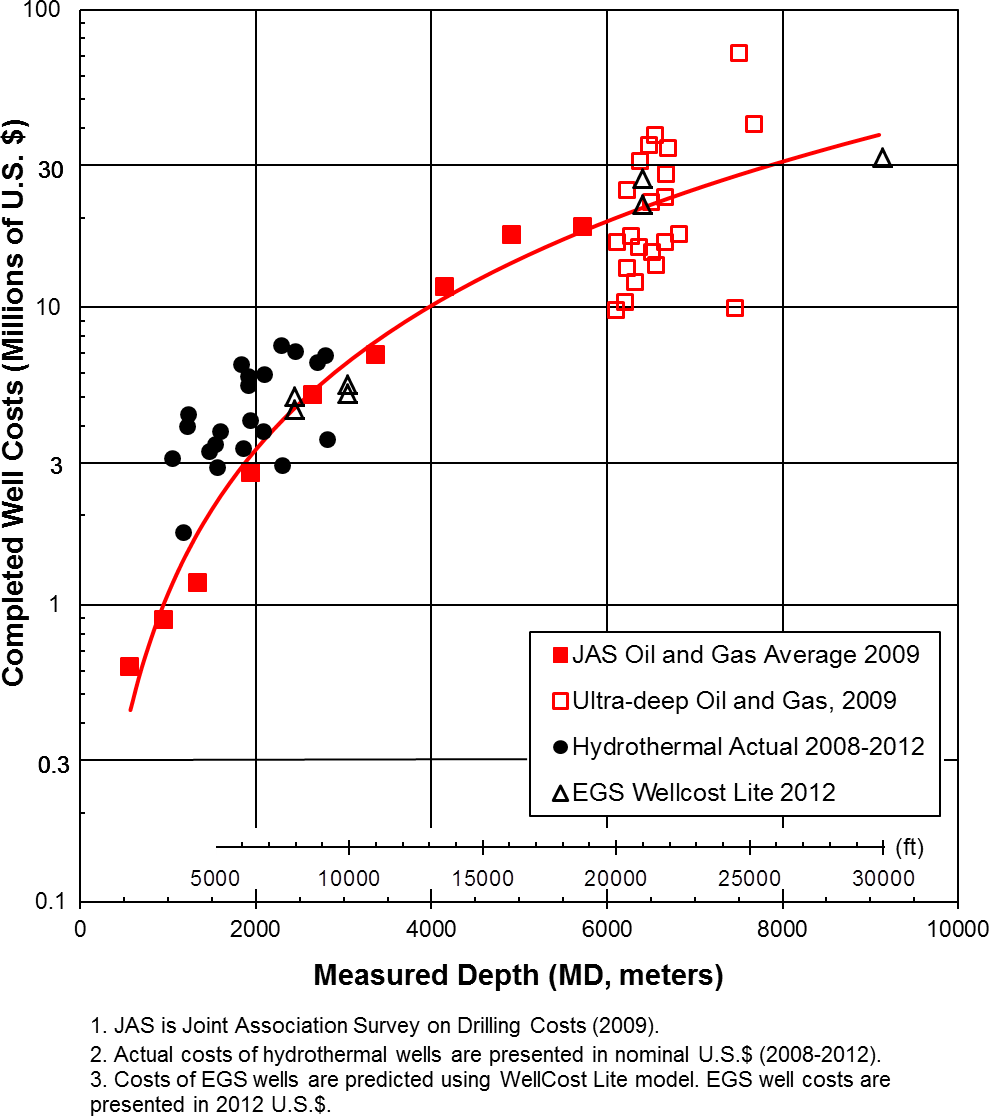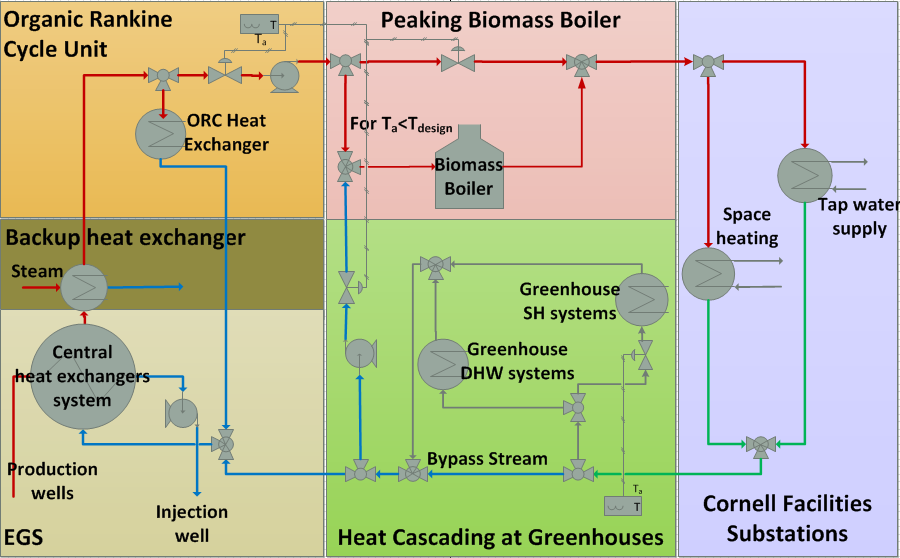Using Supercritical Fluids for Thermal Energy Storage, Drilling Cost Analysis, and Design of a Hybrid Geothermal-Biomass Energy System
Researcher: Maciej Łukawski
Principal Investigator: Professor Jefferson Tester
Use of Supercritical Fluids for Thermal Energy Storage
- Co-designed and built a supercritical fluid flow calorimeter capable of performing isobaric heat capacity measurements at temperatures up to 200 °C and pressures up to 400 bar.
- Measured enhanced heat capacity of fluid mixtures in vicinity of their critical loci.
Drilling Cost Analysis of Oil, Gas, and Geothermal Wells
- Developed a new drilling cost index for oil and gas wells.
- Assembled a cost database of geothermal wells and developed a cost-depth correlation for geothermal well completions
- Correlated learning curve effects related to drilling multiple similar wells in the same fields.
Design of a Hybrid Geothermal-Biomass Energy System for Cornell University
- Performed a technical and economic assessment of retrofitting a low-temperature district heating system and heat cascading solutions at Cornell.
- Optimized the design of a hybrid district heating system and its operating parameters.

Figure 1: Geothermal well costs (in black) compared to oil and gas well costs (in red). Full red markers represent 2009 average oil and gas well drilling costs in nominal US$ (2009). Blank red markers denote individual hydrocarbon wells drilled in early 2000's and normalized to US$ (2009) using Cornell Energy Institute (CEI) index for 17500-19999 ft. depth interval. Actual costs of hydrothermal wells drilled between 2008 and 2012 are presented in nominal US$ and marked with black dots. Costs of Enhanced Geothermal Systems (EGS) wells are predicted using WellCost Lite model and are presented in US$ (2012).

Figure 2: Schematic of the proposed hybrid geothermal - biomass energy systems for Cornell. Red lines represent hot supply water in the district heating system and blue lines represent cold return water.
